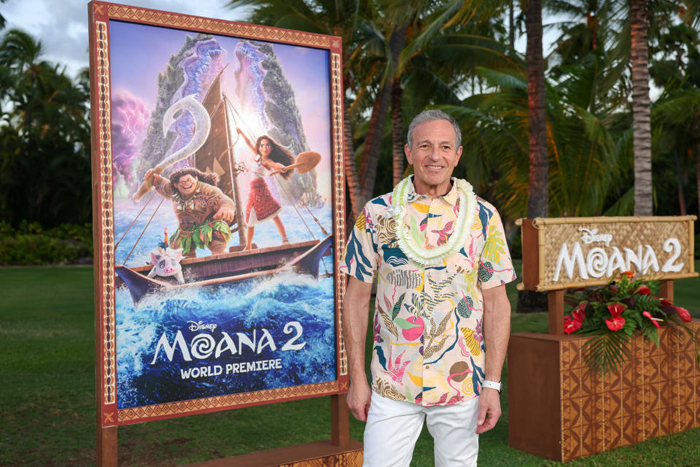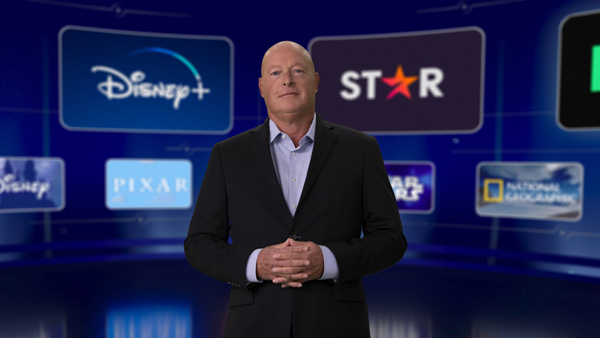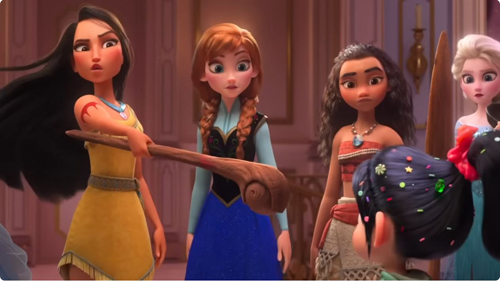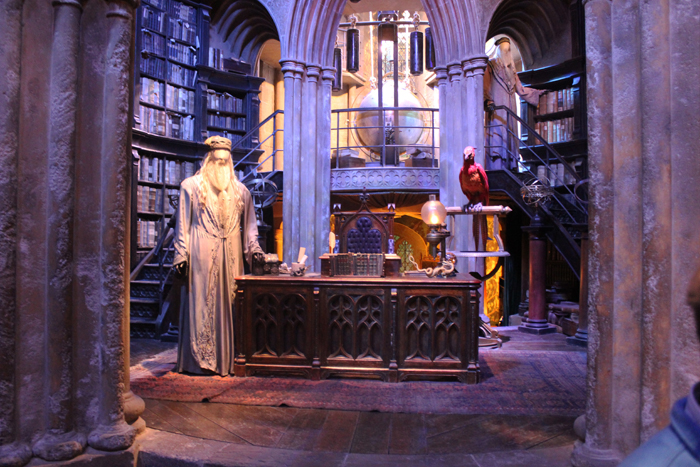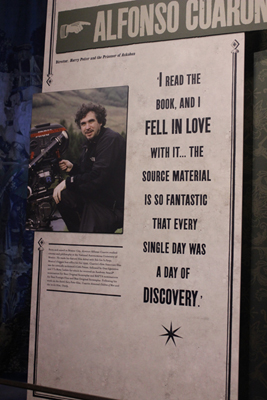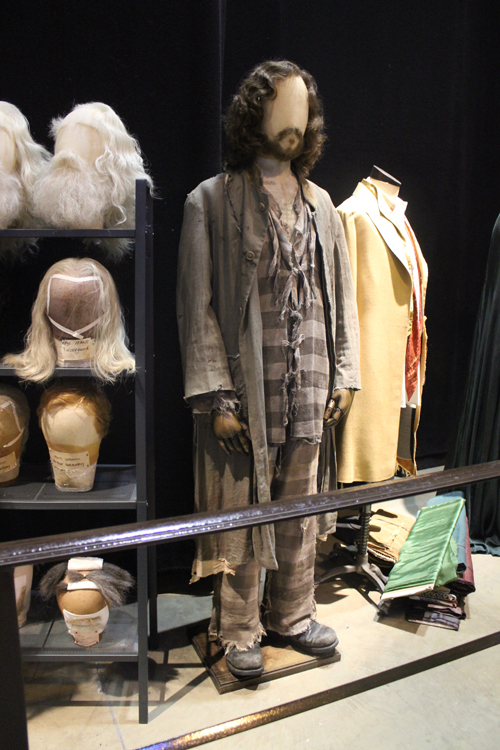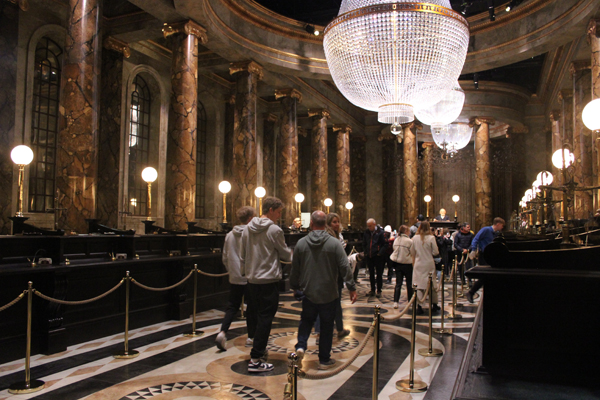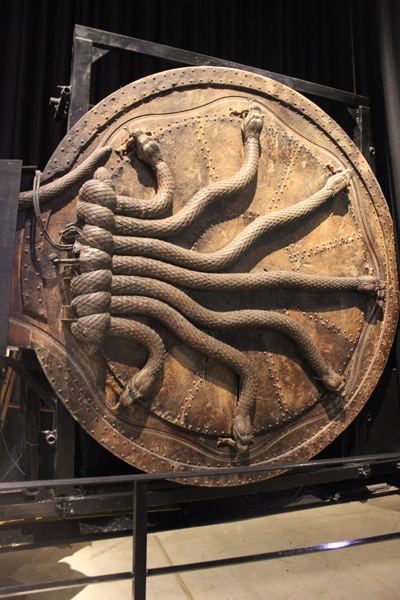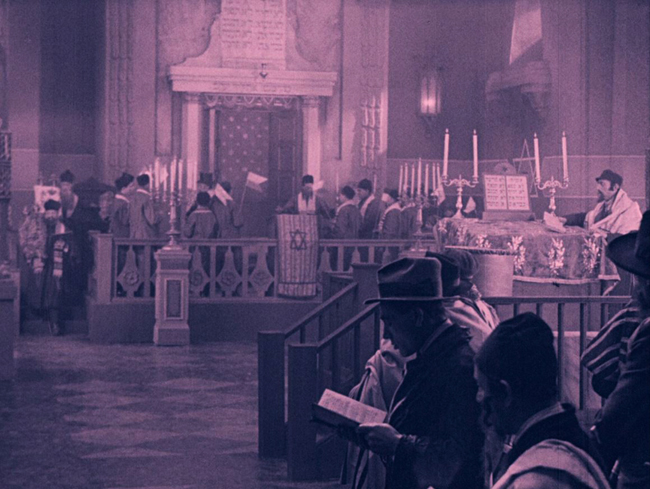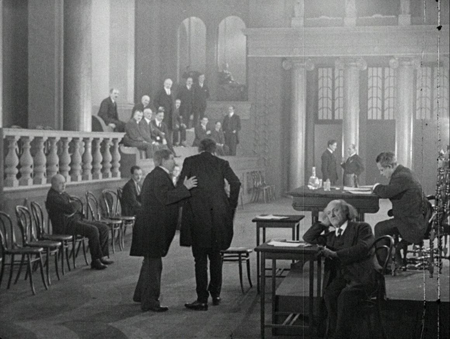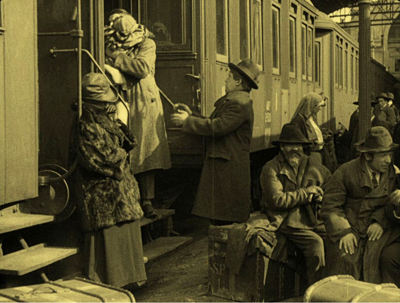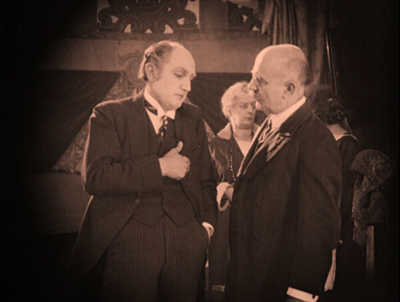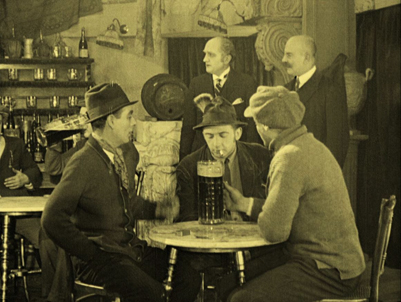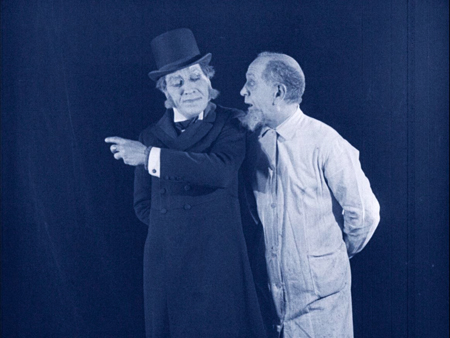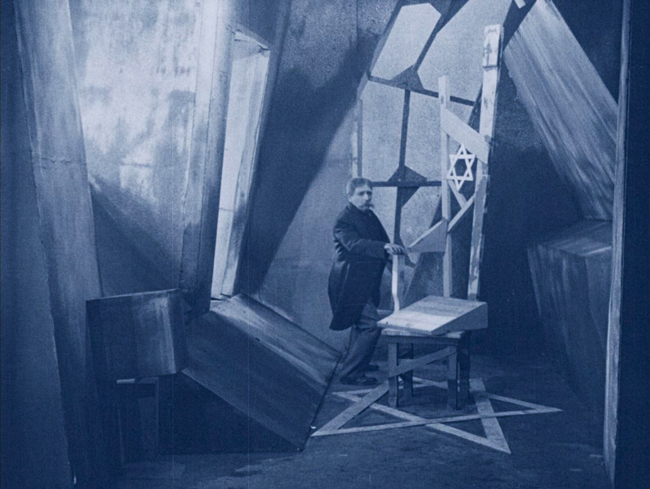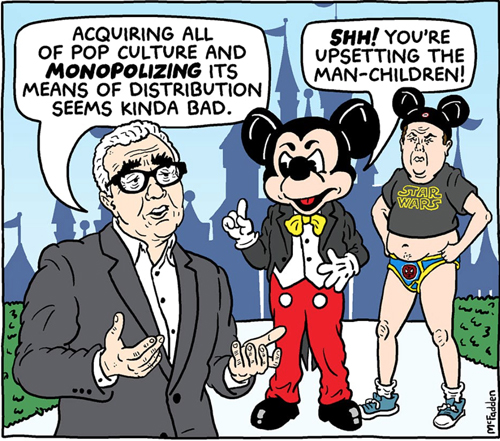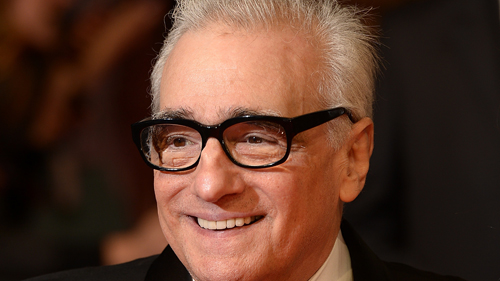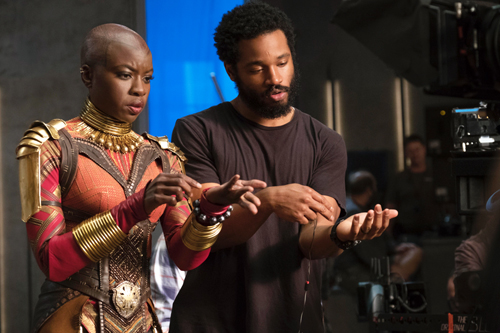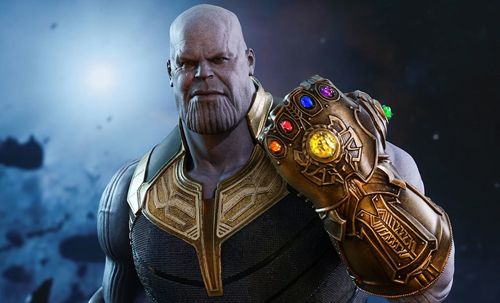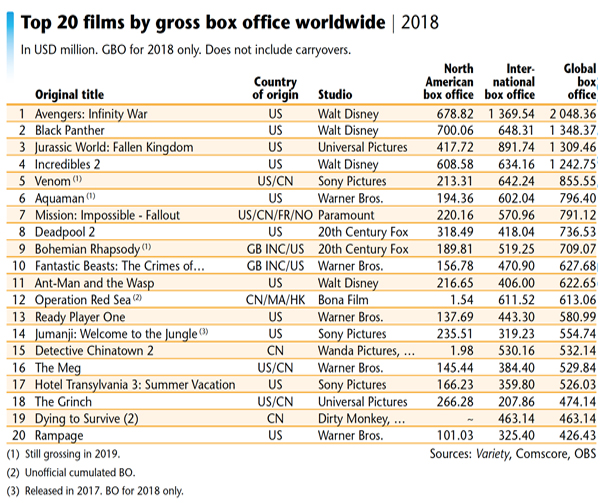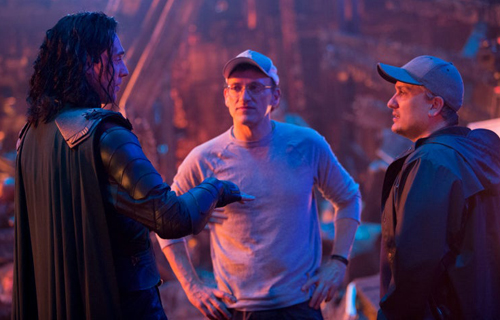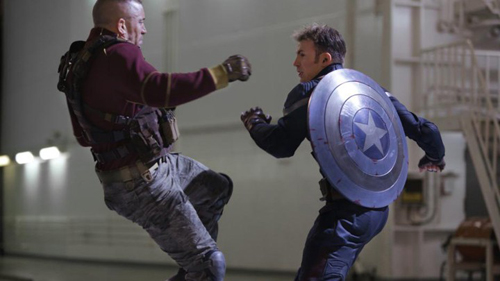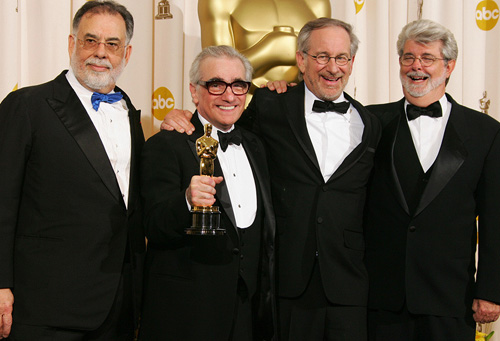Archive for the 'Film industry' Category
Moana’s roundabout voyage back to the multiplex: A guest post by Nicholas Benson and Zachary Zahos
I dimly remember hearing in late 2020 that the sequel to Moana (2016) was going to be Moana: The Series, streaming on Disney+ rather than a theatrical feature. David and I liked Moana very much, but in those of Covid and non-theater-going, it seemed a minor thing. A series wasn’t appealing, and we could just ignore it. Then about a year ago it was re-announced as a theatrical feature. I just assumed that the powers-that-be had simply decided that what was by that time being called Moana 2 would make more money by being released “Only in theaters,” as the posters inevitably pointed out.
That was true, but there’s much more lurking behind such a decision. Straight to streaming or released to theaters first? has become a puzzling question for studios as they discover that the huge profits they assumed their new streaming services would bring in were not all that huge or maybe not profits at all.
I am delighted to have two experts, Nicholas Benson and Zachary Zahos, who follow the distribution strategies of the film industry, contribute a guest post on how Moana 2’s change from modest Disney+ series to a box-office hit creeping up on the total domestic gross of Wicked reflects major shifts in the industry’s decisions about releasing options.
Nicholas Benson received his Ph.D. in Media and Cultural Studies from the University of Wisconsin-Madison and is now an Assistant Professor in the Department of Communication and Media at SUNY Oneonta. His current work considers the intersection of discourses of storytelling and management within franchise production cultures. Zachary Zahos also received his Ph.D. from the University of Wisconsin-Madison and is currently serving as Public History Fellow at the Wisconsin Center for Film and Theater Research. Back in September Zach and Matt St. John contributed a entry to this blog, examining a claim that movie lovers had stopped going to theaters.
Thank you, Nick and Zach, for your contribution to our understanding of the current tangled distribution systems of the current industry! Over to you.
The curse has been lifted—at Walt Disney Pictures.
After a run of box-office bombs, Disney’s flagship film studios bounced back in 2024: Pixar with Inside Out 2, 2024’s top-grossing film, and Walt Disney Animation Studios with Moana 2, which just cleared $1 billion globally. Even Mufasa: The Lion King, a CGI prequel produced by Disney’s live-action division, looks destined to overcome a weak start to become a profitable “sleeper hit.”
The cynical read on all this is that Disney, to quote The Town’s Matt Belloni, “engineered” a surefire 2024 by pushing riskier bets, such as Pixar’s Elio and the Snow White remake, to this calendar year. But, at the end of the day, adaptive engineering, risk mitigation, studio chicanery, whatever you call it—this is how Hollywood lives to tell another tale, and you need not look further than Moana 2 for a revealing case of Disney executives reading the horizon and changing course.
Moana 2’s present status, as a resounding theatrical success, interests us in particular due to the roundabout journey—and P.R. spin—it took to get here. For those unaware, the film now playing in multiplexes called Moana 2 was greenlit in 2020 as a television series (titled Moana: The Series) for the company’s streaming platform Disney+. It was only last February when CEO Bob Iger announced that this project was instead heading to theaters under the new title Moana 2. While the trades were quick to discuss the financial calculus behind such a shift (per Deadline: “after misfires … more Moana is a safe bet for the House of Mouse”), Disney has been careful to publicly attribute this decision to creative, rather than business-minded, imperatives. For instance, Jennifer Lee, former CCO at Disney Animation, told Entertainment Weekly in September:
We constantly screen [our projects], even in drawing [phase] with sketches. It was getting bigger and bigger and more epic, and we really wanted to see it on the big screen. It creatively evolved, and it felt like an organic thing.
As genuine as this sentiment might be, we sincerely doubt that Moana 2’s last-minute about-face, from streaming series to theatrical film, emerged from creative disagreements alone. The film industry has changed rapidly over the last five years—streaming has undergone its own boom and bust cycle during this time, with vintage concepts like advertising, bundling, and return-on-investment, bringing Hollywood executives down to earth. In short, the Walt Disney Company that announced Moana: The Series in 2020 is different from the one that released Moana 2 in theaters last month.
Longtime readers will recall this blog’s fondness for the first film, as shared by David, Kristin, and Jeff Smith. We count ourselves Moana fans, as well, while also agreeing with critical consensus that Moana 2 lacks the inspiration (or songs) of the original.
But what follows is not a review. While we will make reference to certain storytelling choices present in the film, our main goal here is to argue that Moana 2—or, more specifically, the production and circulation context surrounding it—is symptomatic of a global industry in flux. As the world’s largest legacy entertainment company, Disney is not one to buck trends but rather to reinforce them. An engaged analysis of Disney’s recent executive-level decisions offers us a chance to gauge which way the winds of commerce are blowing.
Yet the company’s sheer scope, both internally and across its multi-generational audiences, invariably creates sites of tension and contest. We see that in Jennifer Lee’s public assurances concerning Disney’s creative community, and not its C-suite, steered Moana 2 into theaters. But we also see such tension and contest in how Moana 2’s production history throws long-standing hierarchies at the Walt Disney Company into relief. As a result of Disney+ and recent executive initiatives which we will delve into here, the line separating the company’s film and television output has become increasingly blurred, as have the rules for successfully exploiting marquee franchises, particularly those geared toward younger audiences.
What is clear to us is that, even in success, Disney+ has failed to solve all of its parent company’s problems and in the process has created several new ones. This is not simply because of profit margins, but also because such investments, from both studio and audience, run downstream from discursive categories like “film,” “television,” and “streaming.”
In the case of Moana 2, the shift of Disney’s prized sequel from the “streaming television” to the “theatrical film” column, months out from release, occurred in large part due to the promise of greater financial returns. That much seems obvious, no matter what Jennifer Lee and other creative executives say, given how most studios across the industry have learned to love movie theaters again.
But we do not wish to suggest these leaders are lying through their teeth, either. As strategic as Lee’s statement to Entertainment Weekly may have been, she does seem to genuinely represent the values and norms of the world’s most famous animated film studio. Where else but movie theaters do you go when you design your expensive franchise sequel to be “bigger and more epic”? So, while Moana 2 sailed back to multiplexes amidst an industry-wide correction away from pyrrhic victories in streaming, its journey looks especially inevitable if you account for the particular industrial apparatus from which the film came.
We’ll expand on these ideas by teasing out a few historical threads relevant to Moana 2’s production. These concern Disney+, Disney Animation Studios, and the Walt Disney Company, as well as the latter’s general playbook toward franchising animated entertainment.
Disney+ and the business of animation today
Disney’s recent theatrical rebound is notable given the obstacles—some of them industry-wide, others self-inflicted—its film division has faced since its peak in 2019. That year, Walt Disney Studios reported $11.1 billion in worldwide theatrical revenue, with a record seven films (among them the animated sequels Toy Story 4 and Frozen II) each surpassing $1 billion at the global box office. In November of 2019, the company launched its Disney+ streaming platform. While it always seemed destined to succeed, Disney+ exploded in growth months later as the COVID pandemic closed theaters and Disney’s theme parks.
Since that high-water mark, Disney’s films have struggled, partially due to counterproductive distribution decisions and a streaming-focused production pipeline. On the distribution side, during the pandemic then-CEO Bob Chapek (above) launched Disney+’s day-and-date “Premier Access” program and arranged for Pixar’s latest films, beginning with Soul (2020), to skip theaters and instead premiere on the streaming platform. While this strategy fueled subscriber growth, almost every animated film Disney released to theaters in its wake, most notably Lightyear (2022) and Strange World (2022), underperformed at the box office. Analysts have attributed this cold streak to a range of causes, including the notion that Disney’s streaming release strategy had “conditioned audiences” to wait for theatrical releases to hit streaming.
Much ink has already been spilled on another contributing pop psychology phenomenon, that of “franchise fatigue.” The idea that audiences are burned out by the proliferation and interconnectedness of so much franchise material may not be neatly supported by the data. The top 10 movies of 2024 were all franchise properties, after all. It is a more credible notion if one examines Disney’s many spin-offs on streaming. Since 2019, the company’s marquee film production companies, among them LucasFilm and Marvel Studios, have shifted resources to producing long-form television series for Disney+. LucasFilm and Marvel respectively launched their Disney+ slates with The Mandalorian and WandaVision, both of which were well received and highly rated. But ever since, Disney’s streaming series have attracted increasingly mixed critical responses (even after controlling for toxic fan reactions) and diminishing viewership numbers (here and here).
That does not mean all Disney+ originals are destined for failure. What seems increasingly clear is that certain forms of programming, such as animation, perform more consistently, albeit under a typically lower ceiling of viewership. In October, The Hollywood Reporter published a 3000+ word article headlined, “Is Disney Bad at Star Wars? An Analysis.” To be clear, the piece answers its core question with, “On balance, no.” Nevertheless, this article is relevant to this discussion in that it contrasts the strong ratings of the Star Wars animated series on Disney+ with the franchise’s live-action series for the same platform. New animated series like The Bad Batch have more than earned their keep, with their large volume of episodes (usually 16 per season vs. 8 for live-action series) driving viewer engagement at a fraction of the cost of their recent live-action counterparts.
So, Disney+ is a sensible launching pad for new animated Star Wars series. Does that make it also wise to premiere the latest Disney Princess tale on the same platform? (Despite Moana 2’s “Still not a princess!” joke, in the eyes of Disney, she officially is one, as the Princesses scene in Ralph Breaks the Internet, below, demonstrates.) Well, that depends.
Traditionally, Disney has had three main paths for exploiting animated franchise content: theatrical distribution, commercial television, and direct-to-video (DTV). Each of these had clear advantages and disadvantages, and for many years these three paths looked fairly straightforward. Theatrical distribution, both then and now, is prestigious and visible to a large, diverse audience, and it comes with the potential for massive global box office revenues and merchandising opportunities which can immediately counteract the large budget.
The other two categories—commercial television and DTV—were lucrative paths for many years at the Walt Disney Company, but under the Disney+ paradigm have begun to appear less distinct from the theatrical option. Commercial television traditionally came with less expectation that it feel cinematic, and therefore could be made on a smaller budget. Television series promise a smaller, more concentrated audience of children or existing fans and a long tail financial model that relies on revenue generated through ad support and future syndication possibilities. DTV content, for its part, follows a similar model to commercial television but at an even lower scale of cost, with accordingly lower (but faster) profit potential.
The visibility of commercial television content within the Disney animated fold is moderate (and outright low for DTV). Millions of children apparently watched the Tangled (2010) spin-off Rapunzel’s Tangled Adventures, which was produced by Disney Television Animation and aired from 2017 to 2020 on the Disney Channel. We don’t expect you, reader, to have heard of this show, though at the same time we would be surprised if you never before heard of Tangled. Thus, even resounding successes of this type will remain off the radar of the general, adult-aged public, and so commercial television spin-offs, even if not the highest quality, will not inherently hurt the brand as a large film can.
It’s on this last point, regarding visibility, where the project formerly known as Moana: The Series was always destined to be different. With the company’s flagship studio, Disney Animation Studios, producing it, the budget leaped beyond any animated project Disney produced before for television or DTV. Launching Moana: The Series exclusively on Disney+ had potential upside, but as we will see, these benefits began to look questionable.
Moana’s voyage toward streaming…
Moana: The Series was first announced, by Jennifer Lee, at the virtual Disney Investor Day event in December 2020. The broader theme of the investor’s day was Disney’s new structure, which separated content creation from distribution in a bid to turn to what newly appointed CEO Bob Chapek referred to as a “DTC [direct-to-consumer] first business model.” The Moana series thus joined a slate of other Disney+ releases, including day-and-date release movies like Raya and the Last Dragon (2021), Marvel series such as Loki (2021-2023), and limited series such as WandaVision (2021). Though executives continued to gesture towards the importance of “legacy distribution platforms,” such as theatrical and linear television, the focus was on the corporation’s investment in Disney+. As Chapek put it in his opening statement:
We knew this one-of-a-kind service featuring content only Disney can create would resonate with consumers and stand out in the marketplace and needless to say Disney+ has exceeded our wildest expectations.
The idea to expand the Moana franchise into a series, therefore, was a direct result of corporate confidence in DTC platforms as the future of distribution. Chapek’s new corporate structure promised a streamlined production pipeline that seemed to completely separate the creation and production process from the distribution process — in other words, creatives would generate content and then the distribution team would figure out the best way to get that content to the consumer. Chapek explained the structure in a statement:
Managing content creation distinct from distribution will allow us to be more effective and nimble in making the content consumers want most, delivered in the way they prefer to consume it. Our creative teams will concentrate on what they do best—making world-class, franchise-based content—while our newly centralized global distribution team will focus on delivering and monetizing that content in the most optimal way across all platforms, including Disney+, Hulu, ESPN+ and the coming Star international streaming service.
This new agnostic approach to distribution seemed to lead to a general confusion about how to staff DTC productions. The Moana follow-up presented a mixed bag in terms of who was brought back from the original production. Voice talent Dayne Johnson and Auliʻi Cravalho respectively reprised their roles as Maui and Moana. However, original Moana directors Ron Clements and John Musker were absent. Instead, Jason Hand, Dana Ledoux Miller and David G. Derrick Jr. (above) were hired to co-direct and run the series. Hand, who had the most experience working with Disney animation of the three, started his career at Disney in 2005, as a layout artist on the DTV sequels Tarzan 2: The Legend Begins and Lilo & Stitch 2: Stitch Has a Glitch. Disney has a well-known apprenticeship program and tends to hire and promote from within, so it’s not out of the ordinary that a series like this would be given to greener talent looking to gain experience.
That said, Moana: The Series’s production team was indicative of a broader ambivalence the company seemed to have about how much to invest in, and therefore how to staff, DTC content. While the series Baymax! (2022) brought in Big Hero 6 (2014) director Don Hall as showrunner, other series like Zootopia+ (2022) and the upcoming Tiana (2025) did not bring back the same directing or writing teams from the original films. Instead, Zootopia+ was directed by Trent Correy and Josie Trinidad, who previously worked in the Animation and Story departments on Zootopia, respectively. Tiana is reportedly being run by Joyce Sherri, who served as staff writer for the Netflix miniseries Midnight Mass (2021).
…and back to the multiplex
News on the Moana series remained sparse from 2020 until February 2024, when Bob Iger announced during a CNBC interview that the series would now be a theatrical feature slated for a fall 2024 release. The news came shortly before a Q1 earning call where he assured shareholders that “the stage is now set for significant growth and success, including ample opportunity to increase shareholder returns as our earnings and free cash flow continue to grow.”
Iger’s assurance came on the heels of a tumultuous few years for Disney, after a series of box-office failures and an internal struggle for power that resulted in the ousting of CEO Bob Chapek and a return to the post for Iger. While the issues faced by Disney were multifaceted, the all-in approach to DTC content was central to the company’s financial struggles. Subscriber fees could only generate so much revenue, and that revenue didn’t seem enough to sustain the enormous content library required to maintain a streaming platform. In September of 2022, Bob Chapek indicated to Hollywood Reporter that Disney+ had a content problem. As Chapek put it:
It’s important to go back to when Disney+ was launched and what the hypothesis was about how much food you had to give that system for it to truly maximize its potential, and I would say we dramatically underestimated the hungry beast and how much content it needed to be fed.
The extent of this issue became apparent during a 2023 lawsuit against Disney by investors alleging Disney hid the actual costs of running the service to offer the appearance of profit potential. Though the service is reportedly now profitable, since its inception Disney+ has racked up over 11 billion dollars in losses, showing that the DTC, subscription-based model has not been the massive success it was predicted to be in 2020.
In late 2024, as the premiere for the re-titled Moana 2 approached, those who worked on it related to press outlets various versions of how the series abruptly shifted to a theatrical film. We can return to that September Entertainment Weekly profile to see a few explanations side-by-side. For instance, co-director David G. Derrick Jr. described the decision to pivot from a series to a feature film as a moment of “mutual realization” between the studio’s various teams:
It became apparent very early on that this wanted to be on the big screen. It felt like a groundswell within the whole studio.
Co-director Dana Ledoux Miller framed it as a push from the creatives, out of a desire to showcase their work. She suggested the project had “the best artists in the world” and added:
Why are we not letting them shine on the biggest screen in the biggest way?
This rhetoric stood in sharp contrast to Chapek’s 2020 Investor Day video, in which he seemed to downplay the importance of theatrical distribution in favor of the convenience of DTC exhibition. At that point, there was no sense that artists would feel minimized by having their work showcased on DTC platforms. Instead, these new comments by the creative team touted theatrical exhibition as a prestigious honor and the only way to showcase quality artistic achievement.
In other words, after years of the studio relegating several projects to Disney+ or day-and-date releases, Moana 2’s pivot feels like a pointed reinvestment in the theatrical experience. Jennifer Lee reinforced this perspective when she said to Entertainment Weekly:
Supporting the theaters is something that we talked about. … We love Disney+, but it will go there eventually. You could really put it anywhere, but these artists create stories that they want to see on the big screen and that we want the world to see on the big screen.
When the show was reworked as a movie, the absence of certain high-profile talent associated with the first Moana—especially popular songwriter Lin-Manual Miranda—became apparent. The official reason for Miranda’s absence was that he was already committed to another Disney theatrical project, Mufasa: The Lion King (2024). While Moana composers Mark Mancina and Opetaia Foa’i did return to score the movie, the new songs for the sequel were primarily composed by Abigail Barlow and Emily Bear. The two were, as Billboard put it, “the youngest (and only all-women) songwriting duo to create a full soundtrack for a Disney animated film.” Until that point their only real credit was writing an unsanctioned viral musical based on the Netflix show Bridgerton (2020 – ). Though having young women write the music for a musical about young women was a positive move for Disney, the pair’s relative inexperience became more conspicuous when the Disney+ show was transformed into a tentpole feature film. In its review of the film, The Hollywood Reporter noted that “Miranda’s absence is unfortunately felt” throughout the musical numbers. Variety, more pointedly, called the new batch of songs, “imitation-Lin-Manual knockoffs.”
The lack of personnel continuity between Moana and Moana 2 highlights the general disorganization within Disney’s new corporate structure. Despite the claim that content can be created and then distributed wherever by reading the will of the data gods, the reality is projects still seem to work best when the venue of the exhibition is known during the early stages of production. When Disney has done theatrical sequels they tend to staff them with creative talent from the original. Jennifer Lee oversaw the creation of Frozen 2 (2019), Andrew Stanton returned for Finding Dory (2016), and Pete Doctor directed Inside Out 2 (2024). Though Miranda claims he was otherwise preoccupied, one wonders if he would have still worked on Mufasa: The Lion King had he known the Moana follow-up was destined for a theatrical release.
While this is primarily an industry analysis, even a cursory look at Moana 2’s narrative reveals the editorial marks left by this unusual production. As with the first film, the sequel tasks Moana with breaking an ancient curse, except this one was set by a storm god named Nalo, who drove the different peoples of Polynesia apart. With this clear objective, Moana remains a classical, goal-oriented protagonist, but the seams begin to show once you look at the other characters. Curiously, Nalo remains an off-screen antagonist, who is not properly introduced until a mid-credits scene that mimics Thanos’s first appearance in The Avengers (2011). The journey is also now populated by a group of secondary characters easily identified by a defining trait (e.g., Moni is a huge Maui fanboy). The first act, set on Moana’s well-populated island of Motunui, feels especially abridged from the project’s looser, episodic origins, and the onslaught of new characters leaves little room for the emotional depth and character development that many critics respect about the first film (here and here).
The seams where Moana: The Series was stitched together into Moana 2 are not only evident in the story, but in the production and promotion as well. Being forced into the throes of a giant A-list press junket was probably not what these first time directors signed up for; it’s certainly something the team behind the direct-to-video Cinderella II: Dreams Come True (2002) never had to deal with, and for good reason.
Yet Moana 2’s directors were left answering questions about decisions made in the first movie they had little or no control over. For example, the cute pig Pua, whom fans felt was underused in the original movie, took on a more prominent role in the sequel. When asked by CinemaBlend if they responded to any feedback about the first film, director/writer Dana Ledoux Miller responded:
Look, people really wanted Pua in that first movie on the canoe. I wasn’t around, but we put Pua on the canoe now.
While not overly awkward, the exchange highlights the behind-the-scenes break in continuity. Similarly, young songwriters who should be establishing their own identity were instead having their work compared to the beloved music of Lin-Manuel Miranda. Ultimately, while this has financially paid off for Disney, Moana 2 was clearly a ship built for the smaller more secluded waters of Disney+. Though it has survived, the tepid reviews suggest it may have been only by the skin of its teeth.
Riding the popcorn-bucket wave
Moana 2 is not only indicative of the pitfalls of the DTC model but highlights the inherent potential of theatrical distribution, especially for franchised content. Despite lukewarm reviews, the movie has already earned record numbers at the box office. More importantly, it has reignited interest in the brand more broadly. Moana became the latest entry in a list of high-profile collectors’ popcorn buckets distributed by theaters (above).
While they might seem like a gimmick, these popcorn buckets have become an integral aspect of the theatrical distribution model and the “post-pandemic ‘identification’ of moviegoing.” They  work in favor of both the theaters and the studios by raising awareness about the films and the brand. As one journalist pointed out, “I didn’t realize Despicable Me 4 was happening until I saw the popcorn bucket.” With the release of toy lines (Funko dolls aplenty, including Pua, above and left), popcorn buckets (and nacho boats!), and theme park tie-ins, the hype machine that spins around a massive theatrical release has become somewhat intuitive over the past century in a way that DTC models have difficulty emulating, even with the benefit of synergy within vertically integrated corporate structures.
work in favor of both the theaters and the studios by raising awareness about the films and the brand. As one journalist pointed out, “I didn’t realize Despicable Me 4 was happening until I saw the popcorn bucket.” With the release of toy lines (Funko dolls aplenty, including Pua, above and left), popcorn buckets (and nacho boats!), and theme park tie-ins, the hype machine that spins around a massive theatrical release has become somewhat intuitive over the past century in a way that DTC models have difficulty emulating, even with the benefit of synergy within vertically integrated corporate structures.
Though box-office numbers are important, this hype is equally valuable. In this way, Moana 2 was a success even before it debuted. The trailer for Moana 2 broke the record for the most-watched trailer for a Disney movie ever, reaching over 178 million views in 24 hours. Likely not coincidentally, that trailer ended with an image of Maui holding Pua, announcing that this cute character was, as Miller had put it, “on the canoe” and (more importantly) ripe for new licensing deals. When Moana 2 was announced to be a movie, it kicked off one of the largest and most lucrative global merchandising campaigns in recent memory. Apart from Moana merchandise, there were brand partnerships with airlines to local Hawaiian food chains. Imagery flooded public spaces. Hasbro introduced cutting-edge 3D printing technology to inject toys and dolls as quickly as possible into the marketplace. This success, both in theaters and retail, suggests that even if somewhat clunky, the 11th-hour decision to turn a television show into a movie seems to have been financially prudent – at least in this instance.
New rules, some of them old
During Disney’s 2024 Q4 earnings call, Bob Iger admitted, seemingly unintentionally, the motivation for recent subscription price increases for Disney+. According to Iger, these streaming price hikes were designed less to generate revenue through subscriber fees and more to shift consumers to the ad-supported model:
It’s not just about raising pricing, it’s about moving consumers to the advertiser-supported side of the streaming platform. … The pricing that we recently put into place, which is increased pricing, was actually designed to move more people in the AVOD [advertising video-on-demand] direction because we know that the ARPU [average revenue per user] — and interest in it from advertisers in streaming — has grown.
Iger’s comments point to how these companies are starting to recognize (or grapple with) where the actual value of the streaming service lies within the broader corporate structure: specifically, how the streaming service functions, or serves, the vast media franchises these companies have restructured around. Until recently, executives imagined them as vertically integrated platforms that allowed corporations to get content directly to consumers without the need for middlemen (though, with the exception of Comcast, third-party telecom companies still control the actual distribution pipeline, complicating the notion that these are truly vertically integrated systems). As this system evolves to support ads, content will need to be capable of sustaining viewers over time and selling ad space to sponsors. In other words, despite all the obfuscation of what will likely amount to a transition period, streaming services seem destined to be mostly a different distribution platform for what had been commonly known for the past century simply as commercial television.
Despite some disruptions over the past several years, theatrical distribution continues to hold a privileged position in the cultural zeitgeist, especially for high-profile properties. Movies can air on TV, but the experience of watching them is still culturally different from that of watching something in a movie in the theater. The act of going to the movies is an event apart from one’s day-to-day life (one must schedule a movie, what David called “appointment viewing”), while television, regardless of its distribution mechanism, remains intertwined with the cadence of one’s daily routine.
Take, for example, a recent review of Mufasa: The Lion King (2024) in Polygon. Writer Petrana Raduloviv opines that the movie would have fared better as a video-on-demand release:
Mufasa: The Lion King, the 2024 movie about Simba’s majestic father, seems like it could exist right alongside Simba’s Pride, The Lion King 1 ½, and the animated TV show The Lion Guard. Except instead of being cheaply thrown together for young audiences, it was directed by Academy Award winner Barry Jenkins (Moonlight, The Underground Railroad), with a script from Catch Me If You Can screenwriter Jeff Nathanson, and music from Lin-Manuel Miranda.
In other words, the string of Lion King sequels might lead people to think that this latest one could be treated like the previous ones, being presented DTV. The celebrity talent involved, however, kindled enough interest to lure audiences into theaters and make Mufasa a hit.
Despite claims to the contrary, lines between various exhibition sites remain strong. DTV content and theatrical releases are seemingly different cultural categories that, in turn, invite different reading strategies. As the above quote suggests, success is, in part, based on expectations, and expectations tend to be tied directly to the site of the exhibition. As media conglomerates consolidate and organize transmedia franchises, they must negotiate the utility and corporate value of each exhibition site at their disposal. The task for media producers over the next few years is to calculate the financial value of these cultural categories and use that to calibrate the production costs of their various franchise proliferations. In short, this difference in cultural capital between these two exhibition sites constitutes a difference in industrial strategy as corporations seek to exploit and profit from their various properties in myriad ways. How this shakes out will have lasting effects on the future of film and television creation for decades.
Studios are grappling with these questions of medium-specificity, appropriate exhibition, and franchise management in real-time. New rules are being forged that will shape the future of distribution. As we see it, streaming is unlikely to collapse theatrical and television into a single system but instead offer a hybrid exhibition site that seems to fill the role of both commercial television and the direct-to-video market.
What complicates streaming currently is that it has traditionally been subscriber-supported and therefore followed a premium cable, rather than a commercial television, model of production (see Amanda D. Lotz for more on this distinction). Unlike the commercial television or direct-to-video route, where the value for those exhibition options was tied to their lower production costs, streaming tends to demand a similar quality production to film since it’s not really competing with broadcast television. Instead its rival is seemingly premium cable programming like Game of Thrones. Therefore, it’s very expensive, sometimes more expensive than film production.
Streaming tends to look for a larger audience and is not aimed at exploiting as much as expanding a story world as a franchise. This strategy may be something that fans of that particular story world want, but a general audience would rather watch individual stories than dive into an elaborate franchise saga. Streaming shows also tend not to consistently generate the same cultural impact as a theatrical release (is anyone talking about The Skeleton Crew?). In other words, as it exists, streaming offers the worst of all worlds for media conglomerates looking to exploit their intellectual properties in ways that generate revenue and help the brand. Shows are expensive to produce, they can generate bad press and harm the brand, but they have very little potential to generate large revenues.
We would argue that this is likely why Moana: The Series was reworked into Moana 2 and prepared for a theatrical run. Though the budget has not been officially revealed, based on industry sources, the budget was likely close to the $150 million budget of the first movie. In other words, it’s not because the story got “too big,” but because the budget was too big to justify it being tossed into the increasingly large pile of disposable Disney+ content.
Moana 2 is part of a clear trend. In 2023 The Mandalorian’s final season was transitioned from a Disney+ series to the upcoming theatrical release, The Mandalorian and Grogu (2026). Inside Out 2 (2024) enjoyed a successful box office run as a traditional Pixar theatrical release. A few months later, after the movie hit streaming services, the short, animated spin-off series Dream Productions (2024) debuted on Disney+. The four-episode limited series was produced on a severely reduced budget concurrently with the feature film production. However, mid-production Disney cut the episode order from seven to four.
When Moana: The Series was announced in 2020, Disney also announced a Tiana musical series based on the Princess and The Frog (2009). Though it was set to be released in 2023, it’s still in development – perhaps preparing to shift into a feature film. Disney has also systematically canceled or prepared to phase out many of its more expensive shows, even popular ones. Shows such as Ahsoka, Andor, and The Acolyte are all being canceled after one or two seasons. This suggests that Moana 2 did not evolve on a whim, but rather as part of a broader systematic move away from expensive Disney+ series and towards high-profile theatrical content. As Disney builds its advertising infrastructure, we’ll likely see Disney+ pursue things like Young Jedi Adventures (2023): franchise spin-offs aimed at families and children that are relatively cheap to produce and have syndication potential.
Yet Moana 2 also highlights a unique value of streaming over other forms of exhibition: data. Moana (2016) was the most streamed movie of 2023. Because of this, Disney knew that Moana (2016) was popular among their fanbase. This likely gave Iger and others some confidence that even without the A-list creative talent behind the scenes, the property alone could carry a sequel to a box office win, which in turn results in positive press and better stock performance. Similarly, the popularity of The Mandalorian (2019 -) as the second most streamed series on Disney+, behind only The Simpsons, likely factored into the choice to greenlight The Mandalorian and Grogu (2026) for theatrical release. We would likewise guess that the greenlighting of Frozen 3 and Zootopia 2 was likely less about some burning creative need to expand those stories and more about promising Disney+ data.
The decision to release the Moana sequel in theaters also reflects the obvious point that theatrical movies generate a higher profile than DTV series. Once they end their theatrical runs and are offered on streaming services, the desire to see them may lead to new subscribers.
Ultimately, what we see is not the erasure of one form of exhibition in favor of streaming, or competition between theaters, television, and streaming services, but the formation of a nascent symbiosis between these sites, as media conglomerates consider their place within each corporate enterprise.
Our gratitude to Matt St. John for inspiring and improving this piece.
We would also like to thank Kristin for her edits and insights on contemporary animation.
Relevant to this discussion is a newly filed lawsuit suing Disney for copyright infringement over the Moana franchise. Entertainment Weekly broke this news on January 12, and it goes without saying that we will follow this case as it proceeds.
Harry Potter and and fabulous making-of tour
Kristin here:
Last week I returned from a nearly month-long trip, first in London and then joining a tour of Egypt.
This was my second trip to London this year. The first, in June, served as a vacation after the intense activities of the winter and spring, when I finished my book on ancient Amarna statuary, dealt with David’s death and planning the memorial service, sold my house, and moved into an apartment.
I’m a Harry Potter fan of both books and films and have blogged about the latter twice, here and here. I had long been dimly aware that there was a tour near London, “The Making of Harry Potter”. It involves props, sets, costumes, etc. from the films and is housed in a giant sound-stage at the Warner Bros. Leavesden Studios, where the films were made. I had not previously investigated how one would go about getting there. Before the more recent London trip, however, I investigated further. One can buy one’s own tickets and get to the nearest town, Watford Junction by car or train. The studio runs a frequent shuttle bus (see photo atop the last section below) between the station and the tour entrance. Or one can arrange the visit through various tourist agencies.
The one I picked turned out to be excellent: “Get Your Guide.” “Guide” is the key here. Some of the services email you your train ticket so that you can board your train to Watford Junction on your own. What happens when you arrive I don’t know. The tour I joined met a guide outside Euston station. He ushered us onto the train and got us to the studio’s shuttlebus once we arrived. At the studio, he took us in inside and introduced us to our private guides for the tour. (Our group of sixteen was divided between two guides, which made it relatively easy for everyone to hear their own guide and keep track of him in the crowded studio layout.) The guides were knowledgeable and helpful.
The main alternative to having a guide seems to be using an audio-guide. I have no idea of the quality of the information imparted by these devices. People can also opt to go without the audio-guide and depend on the many studio staff members dotted about waiting to answer questions. This situation led at frequent intervals to people without guides asking our guide a question, upon which he had to refer them to those staff members.
A novel idea for a theme park
The tour is built around what I think is a unique premise: an entire sound stage in the complex of the Warners studios has been turned into a theme park. (Note the overhead studio lighting providing the illumination for the entire space in the photo above; this is present throughout.) Many original sets, costumes, props, design models, wigs, and so on have been laid out in a labyrinthine fashion so that one follows a circuitous path through this vast, dense collection of real items from the film.
To me one of the most interesting aspects of the tour is that it really makes an effort to show the process of making a big film like those in the Potter series. The signs in the hall below are for Cinematography, Art Direction, Costume Design, etc. Each of the directors is introduced on a poster, including here Alfonso Curarón, who directed Harry Potter and the Prisoner of Azkaban.
Even rather modest filmmaking tasks are included, such as a small section on how costumes that need to appear old or ragged are distressed, most notably Sirius Black’s escapee costume as the Prisoner of Askaban. Of course there’s also a demonstration of the creation of digital creatures like Dobby
The fun part
Actually the information about filmmaking was fun. Most of those on the tour seemed to find the anecdotes about the cast and crew during filming as well as the explanations of topics like prosthetics creation and green-screen effects quite enthralling.
Still, apart from being informative, the tour is great fun.
There are the sets, like Dumbledore’s study (top) and the Great Hall (top of previous section). One can’t enter Dumbledore’s studio or the potions classroom or Weasleys’ kitchen or certain other sets; you see them from behind a barrier. Nevertheless the tour begins (after a brief introductory film) with a walk through entire length of the Great Hall. One can stroll through the Forbidden Forest, which includes the anamatronic Agog used in the film, as well as through number 6 Privet Drive, the greenhouse full of mandrakes, and above all the breathtaking Gringotts Wizarding Bank set.
This particular set is not the original but a replica built for the tour–as the guides candidly admit. The original set was destroyed by the invasion of the fire-breathing dragon as it escapes from Gringotts.
On a smaller scale, what fan wouldn’t want to see Dumbledore’s actual podium or the giant clock that begins and ends the time-travel scene in the third film (above)? And there are Moaning Myrtle’s actual costume (in the middle, below left) and Luna Lovegood’s actual sneakers.
I was particularly charmed to see one of the three original versions of The Monster Book of Monsters up close, safely inside a glass case.
I could go on and on, since it’s difficult to think of a setting or a prop or a costume that isn’t included. (Though come to think of it, the Shrieking Shack and the Whomping Willow are missing, but even the sound-stage’s vast space can’t contain everything.) Here are three final examples that particularly impressed me. The door to the Chamber of Secrets from the second film, which I think most people assume is a digital creation but is in fact a practical effect, and the Black family-tree tapestry. Perhaps most impressive of all, there’s even the full-size Hogwarts Express, which one can go inside (bottom). Coming upon that quite surprised me, despite how impressive everything to that point had been.
The business of fantasy
Naturally the tour includes a break to spend money in one of the two restaurants, and it ends in a multi-room gift shop. I browsed but managed to emerge with only “The Official Guide,” quite a good souvenir book for £9.95. After six hours (including travel and lunch break) the official tour ends, but one is free to re-enter the labyrinth on one’s own and stay until closing time, which was 8 pm–though I am told that in the busier summer-vacation period it stays open until 10 pm. Knowing the routine by then and with one’s return train ticket in hand, one can get on the shuttle bus and return to London from the Watford Junction to Euston.
The idea of devoting an entire sound stage and a massive number of the objects and processes used in the making of a popular franchise series probably will remain unique. Warner Bros. is clearly making a great deal of money on this tour and its related restaurants and gift shop and will probably continue to do so for a long time. The individual tickets are quite expensive, though still considerably cheaper than the cost of attending a West End theatrical production these days. Still, it’s hard to imagine another franchise generating a theme park of this particular kind and on this scale.
When I was in New Zealand in 2003, conducting interviews for The Frodo Franchise: The Lord of the Rings and Modern Hollywood, I was privileged to tour a huge warehouse full of props and setting elements. (I touched Théoden’s gorgeous wooden throne!) There were hobbit-hole façades and Gandalf’s cart and all sorts of things. They were just in storage, though, not laid out for public viewing. Wētā Workshop offers tours that sound something like the Potter one. The website describes the offerings: “Learn about the props, costumes, creatures and miniature effects created for your favourite films and TV shows.” There are three tours of varying lengths, 90 minutes, three hours, or four hours. I’ve never taken any of these, but the description suggests a similar but more modest tour than the Potter one. Plus the tours deal with other films and television shows besides the two Tolkien trilogies. Obviously Warners’ tour also benefits from being near London, where the number of tourists visiting far outrun those who make the long trip to New Zealand.
I mentioned to our guide that I thought the tour is better than Disney’s various theme parks. He was pleased, as he considered Disney as the Potter tour’s main competitor. Disney obviously has the advantage of having multiple parks around the world, while one would think that the Potter tour is by definition unique, since it depends on displaying original material from the film series. In fact there is a “Making of Harry Potter” tour in Tokyo, opened in 2023. Judging by the glimpses provided by the video, the displays are a bit more bare-bones, and obviously the sets and their contents are replicas, though made by the filmmakers themselves. It will be interesting to see whether additional Potter theme parks on the model of the Watford Junction one are built. How vital for a successful tour is the presence of original objects in the original filming studio?
Why is the Potter tour better? For a start, at Disneyland and the other parks, one has to queue for lengthy periods, maybe an hour or considerably more, to get into a ride that might last fifteen or twenty minutes. There is a considerable variety of types of rides, some fun or interesting, others not, depending on the attending crowds’ tastes. David and I hadn’t been to either of the American parks in years, but I remember enjoying a few of the rides and going on others because, well, we were there.
By contrast, while visiting “The Making of Harry Potter,” one is continuously moving through the labyrinth–slowly if one wants to see everything, and occasionally having to wait briefly if other people are blocking the view of a particular object. But there’s no queuing apart from the one at the beginning to purchase tickets. (And if you come with a tour group, there are scheduled entry times that bypass the queues.) Beyond that, everything one sees or hears is related to the same topic, the film series that the fans all are devoted to, and every part of the tour is likely to be of keen interest to them.
Certainly I found the entire tour far more impressive and absorbing than I had expected and had a great time. I don’t know if I would go again, but even with four hours to spend there, it is clearly impossible to see everything.
As should be apparent, photography is permitted, and not surprisingly, visitors are encouraged to post their pictures online.
Welcoming Jews as heroes in an alternate 1924 Vienna
The City without Jews (1924).
Kristin here:
Once again Flicker Alley has released a restoration of a film that few have ever heard of. But we all should have heard about this one. And we should have wanted to see it. Now we can.
The City without Jews (Die Stadt ohne Juden) is an Austrian silent film released in 1924 and directed by H. K. Breslauer. It falls into the brief cycle of films about Jews released in the first half of the 1920s. I’ve written about this briefly in regard to Flicker Alley’s earlier Blu-ray of another film in this cycle, E. A. Dupont’s Das alte Gesetz (1923). The other notable Jewish-themed films are the Expressionist classic Der Golem: Wie er in der Welt kam (Paul Wegener and Carl Boese, 1920) and Carl Dreyer’s first German film, Die Gezeichneten (“The Stigmatized Ones,” called in Danish Elsker hverandre, or “Love One Another,” 1922). Thus The City without Jews is, as far as I know, the last entry in this cycle.
The Russian Revolution and civil war had driven many “Eastern Jews” into Europe, and they, created an anti-immigrant sentiment that grew into a more generalized intolerance toward the more assimilated Jews already in these countries. The earlier films had made little reference to the current growth of antisemitism in Europe and particularly in Germany and Austria. Der Golem was a period fantasy, Dreyer’s film dealt with pogroms in 1905 Russia, and Das alte Gesetz was a drama largely about conservative attitudes toward assimilation within the Jewish community.
Beslauer’s film was based on a satirical novel of the same name (1922) by Hugo Bettauer. It has proven his most famous novel, though undoubtedly in film circles he is best known as the author of Der freudlose Gasse, the source for G. W. Pabst’s 1925 classic of New Objectivity. Bettauer was a controversial figure, given the rising right-wing extremism in the mid-1920s. Perhaps spurred by the release of the film, a dental technician and member of the National Socialist Party assassinated Bettauer in early 1925; the assassin was sentenced to 18 months in a mental clinic and then walked free.
Despite an initial success in Vienna, The City without Jews was shown only a few times abroad, in various censored or abridged versions. The last known screening was in the Netherlands in 1933, as a anti-Nazi film. Portions of an incomplete print of that version, added to reels found in 2015 in a Parisian flea market, formed the basis of the current restoration. Given its sources, the result can hardly be identical to the original, but it plays very smoothly, and there are no noticeable remnants of gaps or re-editing. An account of the restoration is offered by Anna Dobringer as one of several brief essays in the booklet accompanying the dual DVD/Blu-ray release by Flicker Alley.
A satirical, serious picture of antisemitism
Of the four Jewish-themed films mentioned above, The City without Jews is the only overtly political one. Beslauer’s film, the action takes place in “Utopia,” a thinly disguised Vienna (where the film was shot), and many of the main characters are the Councillors and Chancellor.
The film starts by emphasizing that assimilated Jews already established in Utopia worship alongside the recent Eastern Jews, as suggested by the two foreground figures in the opening synagogue scene (see top). The government finds it convenient to blame various problems, such as rising prices and unemployment, as well as the fall of the country’s currency, on the Jewish population. With mounting popular unrest, the Chancellor accedes to the idea of expelling all Jews from the city.
The result is a rather uneasy balance in the early portions of the film between satirical views of the local politicians, officials, and businessmen, and the very real sufferings of the Jews and their Christian supporters and spouses. (The film is a quite polished and expensive production, as the legislative chamber, above, shows.) The Christian officials are treated as caricatures, rather similar to the way officials are portrayed in Soviet films of the second half of the 1920s–which Breslauer, of course, could not have seen.
The scenes of the entire Jewish population being expelled, on the other hand, is treated quite seriously and fairly realistically. Scenes of families being dragged out of their homes are not at all humorous, and the departure en masse by train calls to mind methods that were to be used in reality little over a decade later–though here the trains are ordinary passenger ones rather than cattle-cars.
A rather odd premise which the film emphasizes is the impact that the expulsion has on marriages between Jews and Christians. No fewer than five mixed couples of various classes are made prominent, and all are ripped apart. One involves a rabid anti-Semite, portrayed as a drunken dolt. His daughter has married a Jewish man, and they have a daughter. The scene of the husband’s departure shows the anti-Semite (in dark coat at the center below) grieving along with his daughter as they watch the little girl saying good-bye to her father.
The author and filmmakers seem to understand well the familiar phenomenon of the bigot who is only brought to sympathize when people who are discriminated against turn out to be members of their own family.
Pure satire takes over
Once the Jews are gone, the satirical approach fully takes over. It turns out that the Jews had been the foundation of everything good and strong in the Utopian society. Businesses collapse, the currency falls, foreign countries boycott Utopia, and foreign banks (being controlled by Jews) refuse to loan the failing government money. The Chancellor and his allies lament that they no longer can blame the Jews for these problems.
More amusingly, the culture falls apart. High society people who had only dressed elegantly because Jews did decide that they don’t need to buy the latest fashions. One powerful businessman who runs an expensive ladies’ clothes emporium discovers that his establishment is no longer profitable (below left). Austrian men abandon their dignified suits and revert to their casual clothes and giant tankards of beer (right). The sophistication associated with the Jews has disappeared. (All this forgets the recently arrived Eastern Jews, with the action concentrating on the very much assimilated ones.)
Among the five Jewish-Christian couples separated by the expulsion is Leo Strakosch, who is engaged to the daughter of one of the local Councillors. He emerges as the film’s protagonist, returning to Utopia in the persona of a Parisian painter and Roman Catholic. His disguise makes him look like a thinner version of Dr. Mabuse (top of this section), and one suspects that Lang’s two-part film, released in 1922, had not gone unnoticed.
Like Mabuse, Leo manipulates the dire political situation, campaigning for a repeal of the expulsion order and a return of the Jews as the only way to save Utopia’s situation. He does so, of course, in a good cause. Ultimately the decision concerning the repeal hangs on a single vote lacking for the two-thirds majority needed to rescind the order.
Leo gets one of the Councillors drunk and sends him away during the vote, thus causing the repeal to succeed.
The result is a huge success. Jews return, sales and the currency rise, mixed couples are re-united, and the government now credits the returning Jews with the restoration of the country’s health. Strakosch, now out of his disguise, is greeted as the first returnee by cheering crowds and bouquets.
Expressionism as revenge
The drunken Councillor whose lacking vote caused the return of the Jews ends up in a scene that quite explicitly imitates the end of The Cabinet of Dr. Caligari. He dreams of being imprisoned in a cell with Jewish stars built into the scenery (see bottom). He recoils in horror at the sight. This is followed by a shot of a doctor (above) who declares, “A strange case of delirium, my dear colleague. The man imagines himself to be a Zionist.” I dearly hoped that he would go on to say, “I think I know how to cure him now,” but it was not to be. Obviously the diagnosis is completely wrong, since the Councillor is terrified by the Jewish imagery in his cell. But of course, Dr. Caligari’s diagnosis may have been wrong as well.
The film is accompanied by a charming score, provided by pianist Donald Sosin and violinist Alicia Svigals. For a list of bonus materials, click on the link at the top of this post.
The City without Jews has fallen into the state of an obscure film, no doubt, but it deserves more attention now than it received at the time of its release. It has become a cliché to point out that a film of the past speaks to our current world situation. Still, this film does.
Thanks to Jeffery Massino and the team at Flicker Alley!
Captain Cinephilia: Scorsese strikes back
Brian McFadden, No One Is Safe: Martin Scorsese Roasts Your Fandom.”
DB here:
It started with a brief, almost offhand remark.
“I don’t see them,” [Scorsese] says of the MCU [Marvel Cinematic Universe]. “I tried, you know? But that’s not cinema. Honestly, the closest I can think of them, as well-made as they are, with actors doing the best they can under the circumstances, is theme parks. It isn’t the cinema of human beings trying to convey emotional, psychological experiences to another human being.”
When I learned about this interview (Empire, November issue), I took it as simply a roundabout statement of personal taste. Scorsese doesn’t find Marvel movies, and perhaps other comic-book sagas of superheroes, to his taste. He gave them a fair shot, but he now no longer sees them. He considers them visceral stimulation, like carnivals or theme parks. They’re not cinema, if you consider cinema as emotional expression of psychological conflicts.
In the massive responses to Scorsese, people pointed out that viewers often respond emotionally to superhero films. They root for certain characters, they’re amused or thrilled by certain situations, and many claim to be deeply moved by the heroes and villains (Loki, even Thanos). In fact, it’s exactly the “emotional, psychological experiences” embedded in the Marvel and DC plots that some fans say distinguish them from crude comic-book movies that went before. Much the same could be said of the Bond films, which became more humanized with Quantum of Solace, though intermittently before.
As for the claim that the superhero films “aren’t cinema,” I wasn’t really upset. Over the decades we’ve heard that 1910s films “aren’t cinema” (too theatrical), or that adaptations of novels or plays “aren’t cinema” (too literary or stagebound), or that narrative films “aren’t cinema” (usually proposed by avant-gardists). When the claim relies on a notion of some cinematic essence (editing, or pure visual form) that’s missing from this or that movie, you might be able to have a productive conversation. But if “This isn’t cinema” comes down to “I don’t like films like this,” we’re back to personal taste.
On other occasions Scorsese went on to say a lot more. The ultimate result was a 7 November article in the New York Times. I think we should take this as his most thoroughgoing effort to explain his thinking. We can supplement that with some remarks he made in interviews and Q & A sessions.
Herewith my attempts to figure out Scorsese’s argument. Trying to sort this out might teach us some important things about film now.
Scorsese in defense of Cinema
Scorsese’s Times article, “I Said Marvel Movies Aren’t Cinema. Let Me Explain,” begins by disclaiming any hatred for Marvel movies as such. “The fact that the films themselves don’t interest me is a matter of personal taste and temperament.”
But everyone’s taste gets shaped by their moviegoing experience, and in his youth Scorsese was attracted to films from America and Europe. These yielded “revelation—aesthetic, emotional, and spiritual revelation.” The films were, he felt, about characters who were complex, sometimes contradictory in their minds and behavior.
Moreover, these films showed that cinema was an art form, one existing in both commercial and more experimental spheres. Hollywood studio output (Ford Westerns, Hitchcock thrillers), European imports (Bergman, Godard), and avant-garde work (Scorpio Rising)—all these showed that cinema had powers equal to those of music, dance, and literature. These films were technically accomplished, sometimes virtuoso, but at their hearts were intense, complex emotional appeals that assured that they would be watched for decades later.
Today the Marvel pictures, often skillfully made, lack “revelation, mystery, or genuine emotional danger.” They are repetitive, adhering to a basic formula, “defined as variations on a finite number of themes.” By contrast, the films of Paul Thomas Anderson, Claire Denis, Wes Anderson, and other directors offer new and unpredictable experiences, and they expand the possibilities of the art form. “The unifying vision of an individual artist” is essential to cinema.
It’s exactly the exploratory filmmakers who are being stifled by the Marvel releases, and indeed all the franchises. These more personal films aren’t just constrained by lower budgets; they can’t get much exposure on theatre screens either. “Around the world, franchise films are now your primary choice if you want to see something on the big screen.” Most filmmakers design their films for that scale and that communal experience, but the blockbuster films are pushing smaller pictures into streaming outlets.
The franchise mentality is a corporate one. The products are “market-researched, audience-tested, vetted, modified, revetted and remodified until they’re ready for consumption.” As often happens, the business constrains the art. But you might say, what about the old studio system? Wasn’t that as mercenary as today’s franchise juggernaut? No, because the studios set up a creative tension between the business end and the artistic end that yielded outstanding works, even masterpieces. Today’s franchise producers are indifferent to art and hold a view of film history that is both “dismissive and proprietary.”
As a result we have two domains: worldwide audiovisual entertainment vs. cinema. They overlap less and less, and it seems likely that the financial power of one will dominate and belittle the other.
I think that some of these arguments are plausible, while others deserve more probing.
Film art: Who’s the artist?
Andrew Sarris.
During the 1950s and 1960s, this general argument was promulgated by the so-called auteur critics around Cahiers du cinéma and was developed and promoted by Andrew Sarris in the US and Movie magazine in the UK. Scorsese was deeply influenced by these ideas. He was one of many cinephile directors-in-training who assumed that the best films bore the “unifying vision of the individual artist,” who was the auteur (author) of the film.
What was considered the “auteur theory” is too complicated to explore fully here. Minimally, it’s the idea that, all other things being equal, in many movies (often the best ones) the director can be considered the source of the film’s distinctive artistic qualities. The director may achieve this by exercising near-total control (e.g., Chaplin), or working with close collaborators (Powell and Pressburger, Donen and Kelly) or serving as a “filter” for the offerings of various contributors (probably most filmmakers).
This is the minimal case. The maximal one rests on the idea that once we make the director the central power, we then discover a “unifying vision.” At this level the distinctive features of form, style, and theme coalesce into a personal conception of human life. For Ford, that might include the value of traditions and the costs they demand of those subscribing to them. Hitchcock’s recurring concern, Robin Wood famously argued, is the realization that complacency, a trust in social order, is vulnerable to disruption.
The difference between the two versions I’m sketching isn’t hard and fast. Still, it often holds good. A friend, for instance, grants that Tony Scott is a distinctive filmmaker. “He just has nothing to say.” The idea that an auteur has something consistent and personal to “say,” deliberately or unconsciously, from film to film, is a hallmark of auteur criticism at its most ambitious. And the greatest auteurs, perhaps, show development in what they say across their careers. John Ford’s attitude toward the frontier can be said to change from The Iron Horse (1924) to Cheyenne Autumn (1964).
The minimalist auteur concept isn’t new. From the 1920s on, historians and critics often attributed creative authority to Griffith, Chaplin, De Mille, Hitchcock, and European and Soviet directors. And in most film industries, executives recognized that the director had the most responsibility for the film’s look and feel.
One revolutionary edge of auteur criticism was to discover auteurs nobody had noticed before–largely unknown filmmakers working alongside humbler folk. And the critics went further, suggesting that some of these filmmakers could be considered auteurs to the max.
Typically auteur critics didn’t examine the concrete context of production to determine who did what in particular cases. They inferred directorial expression by watching lots of films and tracing recurring strategies of style and theme. Sometimes they backed their conclusions up by interviews with–who else?–the director.
Minimal versions of the auteur idea are central to film culture now. Festivals promote directors, as do studio marketers. Movie lists in reference books and search sites give directors the pride of place. Variety and Hollywood Reporter reviews usually don’t name producers, cinematographers, and other contributors, but the director is always mentioned (and blamed or praised for the film). Academics and cinephile critics ascribe more maximalist “personal visions” to directors around the world, from David Lynch and Spike Lee to Wes Anderson to Wong Kar-wai and Jane Campion.
Auteur +genre = ?
Black Panther: Danai Gurira (Okoye), Ryan Coogler on the set.
Despite the prominence of some directors, they’re usually not what draws audiences. In most countries, the mass-market cinema is dominated by genres that are populated by well-known stars.
Sarris and others assumed that auteurs built upon the foundations provided by genre conventions and star images. Ford gave the Western a new force not only through his images and use of music but also by redefining the star personas of John Wayne and Henry Fonda. Hitchcock and Lang worked with and against the conventions of the thriller, while Ophuls gave the melodrama a melancholic elegance. Or so goes auteur gospel.
The 1970s New Hollywood auteurs embraced genre filmmaking as well. Bogdanovich, Coppola, Altman, Woody Allen, and others tested themselves in a variety of genres. Even Scorsese tried a “woman’s picture” (Alice Doesn’t Live Here Anymore), a musical (New York, New York), and a biopic (Raging Bull). They are only roughly parallel to today’s indie filmmaker who, after a breakthrough project at Sundance or SxSW, signs on to make a franchise picture.
As a generous and enthusiastic cinephile, Scorsese has long subscribed to a version of auteurism. Perhaps one source of his misgivings about Marvel and its counterparts is that he can’t detect auteurs in these movies. Does that mean they aren’t there? Is today’s studio cinema largely a genre cinema, minus the classic bonus of high-end auteur expression?
One of his comments has attracted little notice. Scorsese remarks of the theme-park picture:
The technique is very well done but there is only one Spielberg, there is only one Lucas, James Cameron. It’s a different thing now.
This implies that even the franchise genres could sustain some degree of what Sarris called “directorial personality.” Admirers of Taika Waititi’s Thor: Ragnarock, James Gunn’s Guardians of the Galaxy, Ryan Coogler’s Black Panther, or Patty Jenkins’ Wonder Woman might agree. This has been one line of defense in the pushback to Scorsese’s comments.
Or maybe we should attribute whiffs of personal expression today to the producers (Bruckheimer, Kathleen Kennedy, Kevin Feige). Even in Hollywood’s heyday, we sense Gone with the Wind and Duel in the Sun as Selznick productions. Then there’s Walt Disney, surely a producer as auteur. I suspect that Scorsese finds these old films more inspiring than today’s behemoths.
Closing the drawbridge on Fort Multiplex
Avengers: Endgame (2019).
A genre can rise and fall in popularity. As the Western and the musical declined in the 1970s, horror and science-fiction gained traction as both programmers and A-list blockbusters. Add in the rise of fantasy, crystallized in the prestige accorded the Lord of the Rings installments. Oddly, as comic book sales declined, comic-book movies came to be a central contemporary genre. The superhero film proved a powerful blend of all these trends.
Today, the stifling presence of the fantasy/SF/comic-book franchises seems obvious. Look at two snapshots.
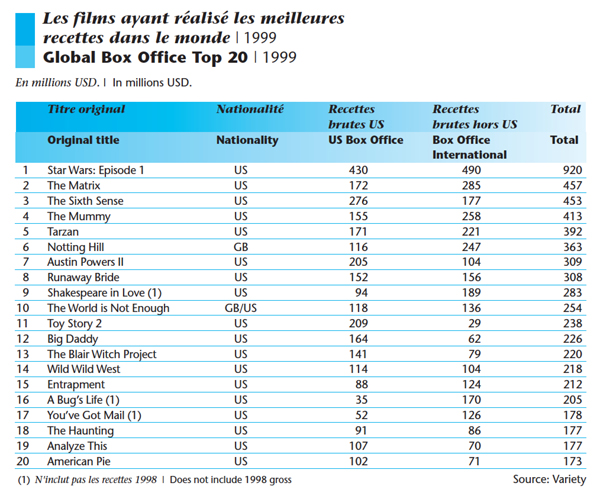
In 1999, the world’s top-grossing film was Star Wars: Episode 1. Among the twenty top hits were fantasy/SF blockbusters The Matrix and The Mummy, as well as a Bond entry. But there were also lower-budget horror films (The Sixth Sense, The Blair Witch Project). Most surprisingly, the top twenty include many comedies, mostly star-driven.
Now consider the 2018 situation.
Five of the global top ten were superhero films. The big winner was Avengers: Infinity War, which earned over two billion dollars globally–nearly twice as much as second-place Black Panther. Among the top ten are Venom, Aquaman, and Deadpool 2. Add The Incredibles as a sixth superhero film if you want. At 11 is Ant-Man and the Wasp. Most of the remaining titles are also franchise entries. There’s also the fantasy/SF blend Ready Player One, the monster movie Rampage, and the action thriller The Meg. Only China is offering live-action comedy (Detective Chinatown 2) and drama (Dying to Survive).
Of course nobody knows better than Scorsese that the big-budget fantasy/SF film has long been with us. His New York, New York (1977) came out the same year as Star Wars and Close Encounters of the Third Kind, while 1980 saw the release of both Raging Bull and The Empire Strikes Back. But in those years straight-up genre films had a fighting chance. Smokey and the Bandit, The Goodbye Girl, 9 to 5, Airplane!, and others won big box-office.
Scorsese films have landed in the top twenty occasionally (e.g., The Color of Money and The Wolf of Wall Street). On the whole, though, I’m not suggesting that Scorsese now sees himself as competing with the biggest grossers. He’s surely right that today’s superhero films dominate the landscape. But do they squeeze out other films to the degree he suggests?
In some venues, probably yes. Small towns with one or two multiplexes may not have space for the minor-key movie. But bigger towns and midsize cities can be quite hospitable to them. In one week, alongside the big releases, multiplexes in my town of Madison, Wisconsin (pop. about 250,000) played Motherless Brooklyn, Jojo Rabbit, Parasite, The Lighthouse, The Current War, Brittany Runs a Marathon, and documentaries on Molly Ivins and Miles Davis. At least some of these qualify as original vehicles. At its widest release, The Lighthouse played on nearly 1000 US screens, and Jojo Rabbit arrived at over 800.
These are merely data points, not systematic samplings. And you might argue that we’re in the middle of Oscar qualifying season, so more offbeat films are numerous now. Okay, go back to July, the most competitive month for domestic releases. Nationally, the big pictures didn’t prevent the release of Yesterday, Midsommar, Late Night, The Last Black Man in San Francisco, Booksmart, The Dead Don’t Die, The Biggest Little Farm, The Farewell, The Art of Self-Defense, Amazing Grace, and Once Upon a Time…in Hollywood.
Again, not all of these count as auteur vehicles, and several failed domestically, but they still squeezed into multiplexes. The Tarantino film obviously commanded a wide release, but many of the titles I mentioned played on between 1000 and 2000 screens. Booksmart opened on over 2500, Midsommar on 2700.
The industry doesn’t depend on the smaller or more personal titles, but then it seldom has. The biggest box-office successes in the heyday of the studio system were almost never auteur classics. Variety reported that the top domestic hits of 1943 were For Whom the Bell Tolls, Song of Bernadette, This Is the Army, Stage Door Canteen, Random Harvest, Hitler’s Children, Casablanca, Madame Curie, Star Spangled Rhythm, and Coney Island. True, Frank Borzage struck gold with Stage Door Canteen, but it’s not typical of his work. Lubitsch (Heaven Can Wait) and Hitchcock ( Shadow of a Doubt) were far down the list, bested by the likes of Sam Wood, Clarence Brown, and Henry King.
Or take 1952, ruled by The Greatest Show on Earth (De Mille), Quo Vadis, Ivanhoe, The Snows of Kilimanjaro, Sailor Beware, The African Queen (Huston), Jumping Jacks, High Noon (Zinneman), and Singin’ in the Rain (Donen/Kelly). True, The Quiet Man hit number 12, and Mann’s Bend in the River number 13. But of the top hundred the only other auteur pictures seem to be Pat and Mike (no. 39), Monkey Business (no, 47), Carrie (no. 54), The Lusty Men (no. 76), and Five Fingers (no. 85).
It seems plausible, then, that in Hollywood “audiovisual entertainment” has overwhelmingly dominated the market for decades. Auteurs seldom win the biggest grosses. But again Scorsese’s career history may have influenced his judgment.
There was a moment, the Holy 1970s, when genre cinema with a personal-vision inflection was occasionally lucrative. The Godfather, One Flew over the Cuckoo’s Nest, American Graffiti, Blazing Saddles, Alien, Apocalypse Now, The Shining, and other notably original productions did earn money and awards. Yet in retrospect that seems an interregnum. The top rentals of the following decade, the 1980s, were dominated by Spielberg and Zemeckis. Then there were the usual array of star-driven comedies and action pictures. Genres came back strong, and auteurs had to work within them, or around the edges.
Such is pretty much the case right now. At the top end, perhaps the superhero films are roughly equivalent to the biblical sagas, historical pageants, and theatrical adaptations that roadshowed throughout the 1950s and 1960s. Now as then, a number of auteur films are still getting theatrical releases. The blockbusters keep the lights on and the popcorn moving so that theatres can afford to wedge straight-up genre pictures and offbeat indies into their week. It seems that you can’t run Avengers: Endgame on all 22 screens.
Art vs. craft?
Anthony and Joe Russo directing Avengers: Endgame.
But maybe we shouldn’t think of the big pictures as “audiovisual entertainment.” What’s opposed to that? “Cinema,” Scorsese said. I’d propose that this formulation means “artistic cinema.” Which is to say that we’re in the realm of the classic distinction between art and entertainment.
This has given an opening to the people riled up by Scorsese’s remarks. Admirers of Marvel, DC, and comparable pictures can say that they find them as emotional, revelatory, inspiring, etc. as anything he finds in Bergman or Sam Fuller. They feel it in their bones. And who’s to gainsay that? Scorsese doesn’t have their bones, and neither do you or I.
On more objective grounds, I suggest that Scorsese has floated another distinction. Forget calling some things “cinema” and some things not. I think that he’s distinguishing craft from art.
Let’s say provisionally that craft is the skillful manipulation of the medium to produce the desired effects. Art, on this understanding, can be considered something more. It’s usually grounded in craft, but not always. It’s also formally and emotionally complex, original in its relation to what came before, and offering new experiences on repeated exposure (rather than replays of the original response). Many, like Kareem Abdul-Jabbar, would add that art induces reflection on ourselves and the world, making us wiser and deepening our humanity.
From this angle, Scorsese’s recognition of the “talent and artistry” of franchise films can be seen as a nod to craft competence. “The technique,” he says, “is very well done.” Our blockbusters are comparable to many of those anonymous hits of the studio era, turned out by skillful but impersonal artisans.
In response, the MCU advocates would need to show that the films go beyond craft. For example, some advocates find in these films the kind of character complexity Scorsese attributes to Hitchcock. He finds that Roger Thornhill in North by Northwest suffers “painful emotions” and an “absolute lostness.” Marvel fans will say something like this about moments in the stories of Tony Stark, Captain Marvel, Captain America, and the Winter Soldier.
Scorsese might reply that these are not complex characters. Yet for many years people said the same about the work of Hitchcock and other Hollywood auteurs. When people started to study them, we saw things differently. Only closer analysis of the comic-book films can give us better grounds to argue about whether their characters exhibit the “contradictory and sometimes paradoxical natures” Scorsese champions.
Realism and its rivals
Captain America: The Winter Soldier (2014); Raging Bull (1980).
A few scattered speculations and I’m done.
I don’t know that we’ve fully recognized that these SF and fantasy franchises descend from earlier forms. Silent crime serials and installment films featuring Dr. Gar el-Hama and Judex had the same reliance on secret identities and world-threatening master villains. Chinese wuxia films gave their knight-errants the power to soar into the air (the “weightless leap”) and emit blasts of energy (“palm power”). The bullet ballets of Hong Kong films have obviously influenced Hollywood action pictures, but we haven’t acknowledged how our comic-book movies incorporate fantasy martial arts techniques. Hollywood owes Asian action cinema more than we usually admit.
But the silent policiers and the fantasy wuxia are flagrantly unrealistic. And Scorsese, more than many of his colleagues, is committed to realism. He couldn’t, I think, make Big Trouble in Little China or Kill Bill. I’d suggest he’s intrinsically out of sympathy with quasi-supernatural action. (Hugo is a historical film, and it’s about a sacred era of Cinema past.) Superhero dramaturgy, I hazard, rubs him the wrong way, and not just because it lacks psychological depth.
I’ve argued elsewhere on this blog that Scorsese makes forays into expressionist and impressionist technique, but they usually issue from a base of harsh realism. His commitment to realism may make it hard for him to engage with the more outrageous narrative conventions of the superhero film.
Here another classic dichotomy suggests itself. If you have to choose between basing your story on plot or character, Scorsese will choose character. In fantasy films, though, character motive and reaction are based on elaborate plot machinations. These films depend a lot on elaborate fake identities, as well as recognitions of hidden kinship. She’s my sister! He’s my father! Such devices serve to provide intricate genealogies and networks of relationships for fan homework.
Likewise, theatrical melodrama and adventure fiction from the nineteenth century supply superhero sagas with orphans of mysterious parentage, duels, hairbreadth escapes, family secrets, coded documents, precious but mysterious objects, and other franchise conventions. These are woven into complex schemes and counter-schemes of the sort found in the silent crime serials. But all these features run counter to the psychological conflicts that animate Scorsese’s plots.
Recognitions of kinship rely in turn on a plot strategy that’s worth discussing a little more; I suspect it yields much of the emotional resonance that fans enjoy. These films rely on courtship and romantic rivalries throughout, of course, as well as friendships forged and broken. These are standard for most American genres. But I’ve been surprised at how often family relations are developed in complicated ways.
It’s not just Star Wars. The Marvel Universe relies heavily on kinship to sustain its plots, as well as its pathos. Tony Stark and Pepper Potts have a daughter, as does Scott Lang. Hawkeye has a family, as does T’Challa, whose cousin N’Jadaka becomes a prime adversary. Nebula and Gamora are pressured to be dutiful daughters to Thanos. Thor and Loki share a mother, Frigga. You can argue that Tony Stark becomes a father-figure for Peter Parker. Other characters are more isolated, but for some of them, notably Natasha and Bucky, the Avengers team constitutes a surrogate family.
Marvel’s focus on the family asks us to exercise the skills we must bring to classic mythology, nineteenth-century novels, and TV soap operas. We need to keep track of who’s related to whom, and what in their past encounters can arouse obligations and conflicts. I don’t think that plots resting on such dense kinship relations are of great appeal to Scorsese; his families, when they’re present at all, are pretty small-scale (Raging Bull, Cape Fear, Shutter Island, The Age of Innocence).
Most of all, when Scorsese speaks of these films shying away from risk, I suspect he’d include their avoidance of narrative risk. In fantasy and SF, nobody need really die. Hero, villain, love interest, and sidekick can return in a parallel world, or they can be resuscitated through a new gadget. The worst outcome need not be the worst, as when Avengers: Endgame uses nanotech and time travel to rewrite the past. Plot mechanics again. Despite all the assurances that Tony Stark is really, really gone, we could find a way to bring him back if Downey wanted to sign on again. (Black Widow is being resurrected for a prequel adventure.) But there’s no bringing back Sport from Taxi Driver or Rodrigues from Silence—except in a prequel, another convention that Scorsese would likely disdain.
I’m just spitballing here, but for Scorsese and other stylized realists like Michael Mann, the comic-book convention of eternal return might seem merely juvenile wish fulfillment. Something really has to be at stake, and ultimates must be faced’ Danger and death are real. This is grown-up drama.
I’m not intrinsically opposed to the conventions ruling comic-book movies myself. In general, I think that plot is as underrated as character is overrated. (I’d rather give up the distinction altogether, but that’s another story.) Superhero films are mostly not to my taste, but I think they’re worth studying as intriguing contributions to trends in modern cinema. My point is just that the personal aesthetic of Scorsese, as both cinephile and cineaste, doesn’t fit very well with the elaborate, ever-changing rules of the magical MCU. He finds enough magic in a sinuous tracking shot, or a carefully synced doo-wop song, or an unexpected angle, or a wiseguy shouting match. That is Cinema.
There are other questions we might ask about Scorsese’s remarks. For instance, when he celebrates the thrill of communal moviegoing as a central feature of Cinema, he seems to ignore the fact that the franchise pictures are our prime multiplex attractions. Many viewers slot the more “personal films” into a future Netflix queue, but they commit themselves to seeing the big films on the big screen. That choice can yield contemporary viewers some of the electricity that Scorsese found at a screening of Rear Window. And when they’re not checking their text messages or chatting loudly with their pals, they might even give themselves up to laughs, screams, and applause, just as in the old days.
Since I wrote this, though, something much more draconian than superhero pictures may threaten non-franchise pictures. On Monday, Assistant Attorney General Makan Delrahim said that the Department of Justice is moving to end the consent decrees that have governed Hollywood studio conduct since 1948. (See here and here.)
The implications of this are staggering. We may see the return of block and blind booking, the prospect that a studio could own a theatre chain (and give favored place to its own pictures), and the decline of independent producers and art houses that favor smaller films. Nonsensically, Delrahim quoted an earlier Scorsese remark about his craft: “Cinema is a matter of what’s in the frame and what’s out.” Delrahim went on: “Antitrust enforcers, however, were not cast to decide in perpetuity what’s in and what’s out with respect to innovation in an industry.” Thus the ideology of predatory “disrupters” goes on, and even auteurs are unwillingly recruited to the enterprise.
Thanks to Jim Danky for calling my attention to the McFadden comic, and to Jeff Smith for discussions of Scorsese’s arguments. Thanks as well to Colin Burnett for discussion of the Bond saga.
My lists of top-twenty films come from the European Audiovisual Observatory’s publications Focus 1999 and Focus 2019.
I’ve left aside other writers’ analyses of Scorsese’s views. I benefited from reading Ben Child and Helen O’Hara in The Guardian, Christopher Orr’s older review in The Atlantic, and Zachary Zahos at Playback. Also pretty forceful is Kevin Feige’s defense of the MCU, which I discovered only after writing this entry. He argues for Marvel films’ value on several grounds, including their display of positive social values. And just before I posted this, the Russo brothers weighed in.
Here are other Scorsese comments made before the New York Times piece appeared. After his BAFTA David Lean lecture on 12 October, he reiterated his view.
Theatres have become amusement parks. That is all fine and good but don’t invade everything else in that sense. That is fine and good for those who enjoy that type of film and, by the way, knowing what goes into them now, I admire what they do. It’s not my kind of thing, it simply is not. It’s creating another kind of audience that thinks cinema is that. If you have a child and the child wants to see the picture, what are you going to do? It’s up to you. The audience that sees them now, the fans that see those pictures now, they were raised on pictures like that.
The technique is very well done, but there is only one Spielberg, only one Lucas, James Cameron, it’s a different thing now. It’s an invasion, so to speak, in the theatre. . . .
We are in a moment not only of evolution but of revolution, in pretty much the whole world, everything we know, the old political systems, it’s almost as if the 21st century is beginning now and technology has gone with it and that means cinema goes with it.
Yes, see a movie in a theatre, it’s the best with an audience, but the actual concept of cinema has become something that is not definable. Something can play as a hologram, something can play as virtual reality, maybe there is going to be an extraordinary epic in virtual reality at some point. We have to start expanding what we think of as narrative, music, literature, art and particularly the visual image.
Granted, this whole passage is a bit baffling. It’s not completely clarified in a press conference the next day at the BFI London Film Festival. The relevant section starts at 16:26.
It’s also interesting that Benedict Cumberbatch (aka Dr. Strange) defends the need for auteurs.
Some comments on Sarris’s career and the vagaries of auteur theory are here. I discuss Black Panther and its debt to classical Hollywood storytelling here.
Francis Ford Coppola, Martin Scorsese, Steven Spielberg, George Lucas (2007).












